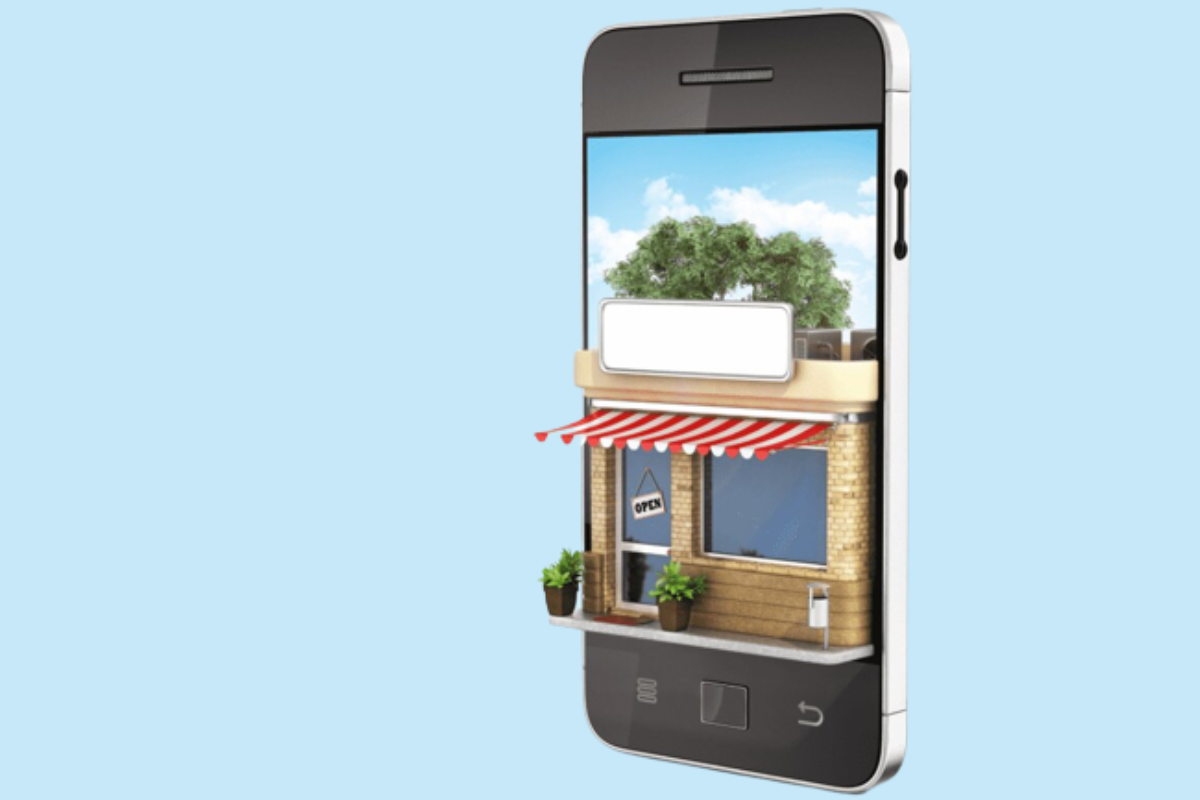How To Sell Stuff Online And Make A Profit
By Heidi Unrau | Published on 20 Jul 2023

Selling stuff online is an easy way to make some extra money. And you can sell just about anything on the internet. You’ve probably mastered the art of selling your clutter for cash. But if you’re looking to make a profit, or start a little side hustle, you’ll need to consider a few other things before you get started. So whether you’re looking to flip that vintage fashion bargain you found at your local thrift shop, or turn your mess into a money-making business, we’ve got some great tips to help you sell your stuff online and make a profit.
Getting Started
Make A Business Plan
That’s right! It doesn’t matter if you’re selling one thing, ten or a hundred. Any path to cash needs a road map. You need to figure what you’re going to sell and how you’re going to sell it. Are you selling a few things here and there, like stuff you don’t need anymore? Or are you looking for an ongoing gig to create a consistent stream of income? Choose a selling platform based on your goals and bottom line.
Marketing
Don’t skimp on the details. This is one time when more is more. Include as many details as possible about the brand, make, model, year, size, colour, and condition (to name a few). Upload several well-lit pictures from multiple angles and your odds of closing the sale just got higher. Buyers are choosy and the competition is fierce. Stand out with a killer description and bright, clean professional-looking photos.
Setting Your Price
The price will make or break the deal. What you’re selling, and where, will determine how to price your items. Mint condition designer brands, high-demand collectibles, or brand new items from wholesale outlets will go for a lot more than the stuff you pulled out of your garage. Price your items according to how you’re selling, what you’re selling, how much, and how often. Take into consideration site hosting fees, marketplace sales commissions, transactions fees, and shipping costs. For example, shipping is calculated by weight, size, speed, and domestic vs. international deliveries. If you don’t pay attention to the associated costs, you could end up losing money instead of making it.
Selling Through Your Own Online Store
If you’re looking to build a business, create a consistent stream of income, or regularly sell a lot of stuff, your own online store is the way to go. This way, you are in complete control of what you’re selling, the price, and how it’s marketed.
You can also process transactions quickly and easily. The best part, you can integrate your store across social media platforms like Facebook and Instagram, helping you get even more traction.
But this approach means you’ll have to put in more work getting your business out there and driving traffic to your site. You have to build your customer base from the ground up. You’ll also need to take into consideration site hosting fees, transaction processing fees, and shipping costs. Ads are a great way to boost your store’s visibility and reach more potential customers, but they’ll cost you.
Selling Through An Online Marketplace
Selling through an established marketplace is the most popular method to sell your stuff online. It’s super quick, easy and there are no upfront costs. You’ll also get instant access to millions of potential buyers already using the platform. You don’t need to worry about setting up a site or building an online presence. The customer base is already there. This method is best suited for miscellaneous items you plan to sell sporadically.
On the downside, the competition is fierce. And since you can’t brand yourself on these platforms, price is king. It can end up being a battle of the cheapest, where everyone undercuts each other’s price to win the sale.
On top of that, most marketplaces will skim a commission fee, usually about 20%, off your final sale price. So if you price your item too low and it sells, you could be in the red after commission and shipping costs.
Best Sites To Launch Your Own Store
Shopify
Hands down the best way to sell online if you’re looking to build a business. You can design your own store and scale it as you grow. You can also integrate it across social media platforms. The site is highly customizable so you can create a brand that stands out.
Shopify offers thousands of apps and extensions to help you grow your business. They provide their own payment processing feature, as well as hundreds of other payment options to help you close the deal. You have access to around-the-clock customer support, making selling stuff online completely stress-free.
Beware of the costs though. If you open a store on Shopify it’ll cost you about $30 a month plus a 2% transaction fee on every sale. Depending on your goals, this site could end up costing you as much as $300 a month as you grow plus the costs of additional apps and plug-ins. And that’s all before shipping.
Wix
If you’re a beginner and looking for something user-friendly, Wix is your new best friend. With easy drag and drop website design features, you don’t have to be a coding or digital marketing whiz to get your site up and running. You get access to hundreds of free apps and the ability to integrate over social media platforms.
Wix is a great option for any type of item or service. The product options are endless. The built-in templates will take the guesswork out of presentation and design. You can accept payments through their in-house payment processing feature, or other gateways like Square, Paypal or Stripe. Important to note, Wix is not compatible with Apple Pay.
Plans range from $23 a month all the way up to $500. But unless you’re planning to become the next Amazon, you don’t need to worry about premium pricing. The three standard packages all include payment processing, connecting your domain, and even Ad vouchers worth up to $300.
Best Online Marketplaces To Sell Your Stuff
eBay
Boasting almost 180 million active users from almost 200 countries, eBay is the grandfather and Mac Daddy of the digital second-hand market. While there are costs associated with this platform, the exposure alone makes up for it – you get access to a massive global marketplace.
On eBay, you have a couple of selling options. You can either sell at a set price or choose to auction your item to the highest bidder. Whatever you sell your item for, eBay will take a 10%
commission. If you list more than 50 items or set a reserve price (the lowest auction price you’re willing to accept) those selling upgrades come with additional fees. Make sure you’re paying attention to your net profit from the sale and how the shipping costs will impact your bottom line.
eBay is best suited for obscure collectibles, nostalgics, vintage brands, antiques, and high-end brand names that are in top-notch condition.
Amazon.ca
If you’re looking for a broad market, Amazon.ca is an excellent choice. Over 181M people shopped on Amazon.ca in the last six months alone. And 9 out of 10 online Canadian shoppers are likely to check out Amazon.ca before any other site. Those are some impressive numbers. So if you want to sell to a large market but keep your shipping domestic, Amazon.ca is the way to go.
Having said that, Amazon’s pricing can get a little complicated. Depending on the selling plan you choose, you’ll pay anywhere from $1.50 per item or $30.00 a month. On top of that, they’ll charge a commission on the final sale price of your item. Upgrades for advertising or additional selling perks come with added price tags.
On Amazon, you can pretty much sell all the things. But keep in mind the top 5 best selling categories are electronics, clothing, and accessories followed by home and kitchen.
Poshmark
If eBay and Kijiji had a baby, it would be Poshmark. Home to 40 million users, this is the best site for selling high-end, brand-name fashion items and designer home goods. So if you have a lot of clothes or collectibles from well-known brands, you’ll benefit from a community of buyers with expensive taste.
Here, the expectations are a little higher. Presentation is everything. So make sure you take a clean, crisp, and classy picture along with a detailed description then share with the community. When you make a sale, Poshmark will send you a prepaid shipping label. Pack with care and pop in the mail. No sketchy meetups. No annoying tire kickers.
For sales under $15, Poshmark charges a flat fee of just under $3.00. Anything over that, and they skim a 20% commission off the top of your final sale price. If you’re tired of lowball offers on top-shelf brands, the fees are a small price to pay for scoring top dollar on your premium items.
Ready, Set, Sell
The road to profit is paved with good intentions, but so is the road to loss. If you’ve quickly offloaded some of your junk online for a quick buck, you may be thinking selling stuff online is a piece of cake. Sometimes, it is! But if you’re looking to start a small business or side hustle to make a profit, things get a little more complicated. It’s one thing to sell your Star Wars toaster on Facebook Marketplace that one time. It’s totally different to become an online seller trying to generate an income with costs and a bottom line to keep track of. Taking the time to understand the pros and cons of the various online platforms and marketplaces will help you make the right decision for your goals. There’s money to be made out there. Now go get it!
